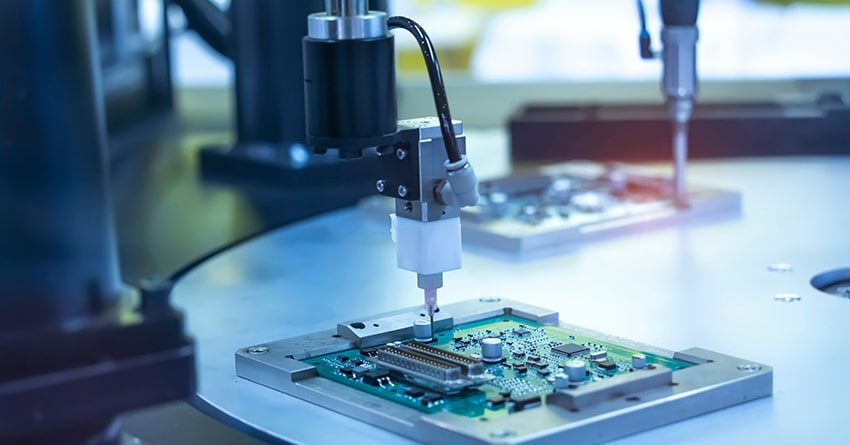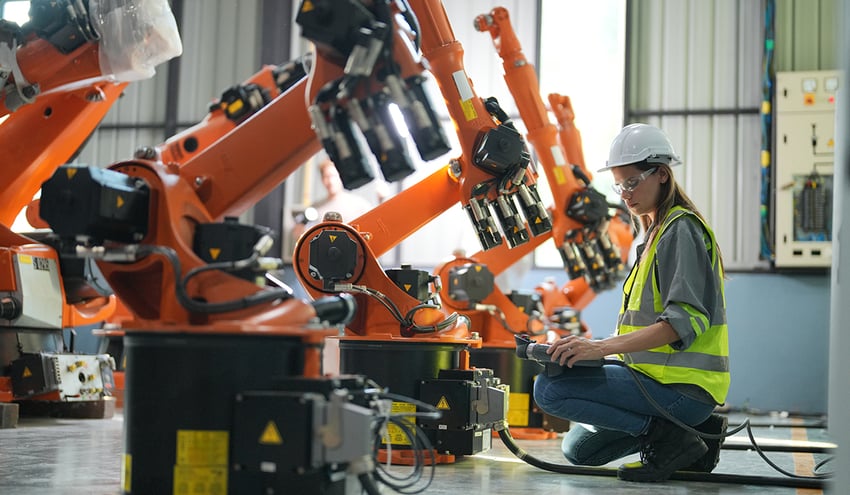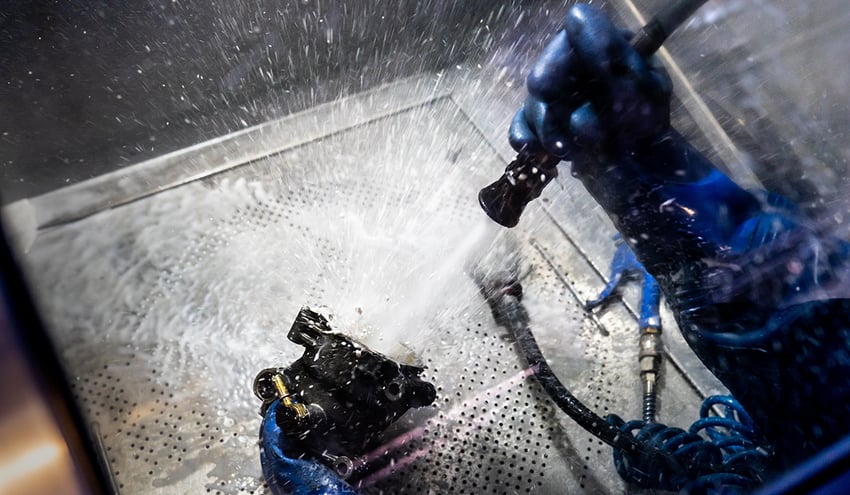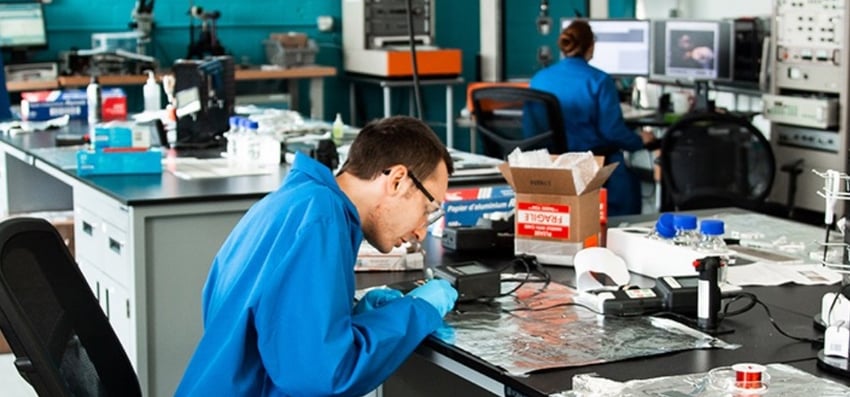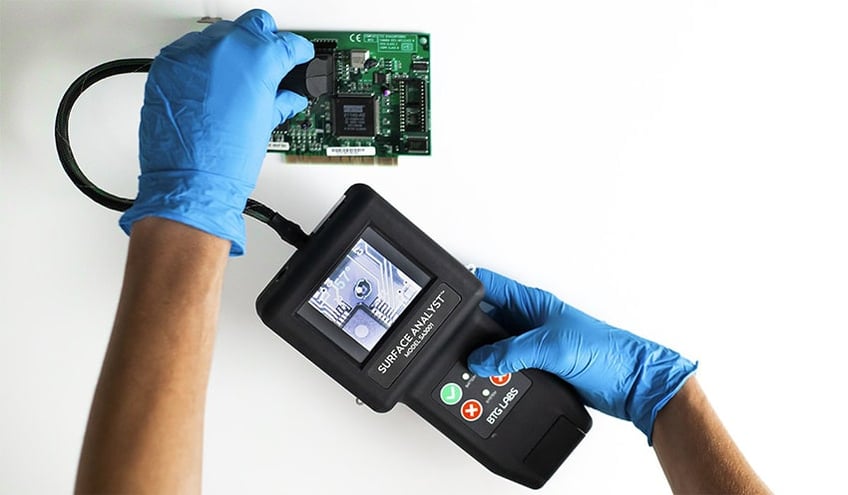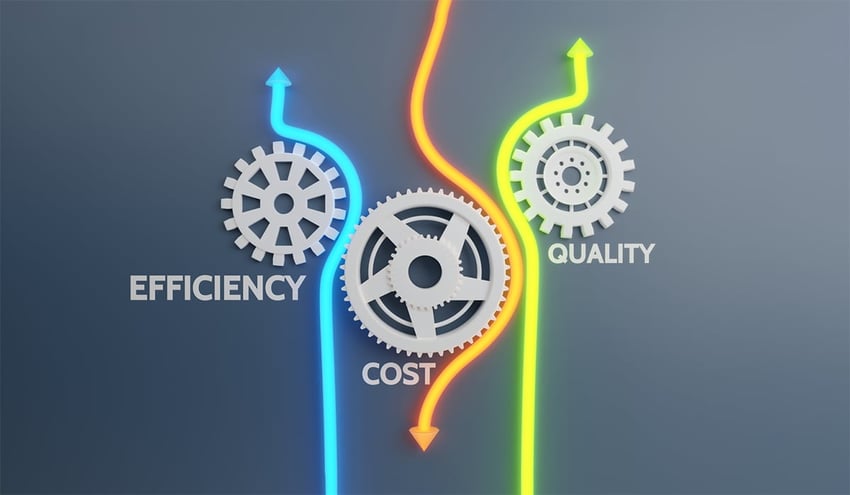When creating their next innovative product, designers, and manufacturers strive to achieve optimal performance while minimizing assembly and materials costs. In this pursuit, they often focus on optimizing material usage. In the quest to achieve optimization, it is uncommon for excess materials to be incorporated into a product's design unless there are specific aesthetic, functional, or utilitarian reasons.
Therefore, it is intriguing that mechanical fasteners, consisting of numerous added "extra" components, are frequently employed as the primary joining process in many assemblies.
What is Adhesive Bonding?
Adhesive bonding, on the other hand, is, by definition, a more straightforward proposition. Adhesive Bonding is the process by which two surfaces are joined together utilizing the intermolecular attractions between the surfaces and an intermediate substance (adhesive).
This innovation has revolutionized how products are designed using only three components to create a bond (e.g., two substrates, the materials being bonded, and the adhesive). In addition, fewer pieces require fabrication to create the whole product because adhesively bonded joints are incredibly resilient with a strong bond or seal. Therefore, these structures are more reliable and cost-effective than products built using massive amounts of extraneous, heavy metal fasteners.
In this article, we'll compare these two joining techniques and explore why mechanical fastening is still the dominant assembly method, its drawbacks, and how adhesive bonding is the true future of manufacturing. We'll also explore ways to ensure adhesive bonds are as strong as possible, significant considerations when developing new products to be assembled using adhesives, and how to design manufacturing processes with all these things in mind.
Why are Mechanical Fasteners Used?
It's important to say that mechanical fasteners aren't inherently bad, which is why they have become the standard joining method in manufacturing.
For example:
- It is difficult to manufacture a product as a single unit. Fabricating large, fully formed pieces has only recently become more common. As a result, subassemblies are created and fastened together mechanically.
- Historically, designing with mechanical fasteners has been the easiest and most straightforward method of assembling components into a product. There were no other affordable or understood possibilities.
- Process requirements for mechanical fasteners are relatively simple and defined by specifying torque with widely available tools for measuring these specifications.
- Mechanical fasteners are usually durable and don't typically go bad unless they're exposed to extreme environmental conditions.
- Mechanical fasteners have been the standard forever. If it isn't broken, why fix it?
Even with all these benefits, mechanical fasteners have some unignorable drawbacks.
Firstly, it takes a lot of mechanical fasteners to assemble large products. Often, this means using several different types of fasteners for the same assembly, making it difficult to keep track of which kinds need to be used, where, and how many. Sometimes, it's even necessary to over-purchase fasteners to ensure there will be enough to complete the job. As a result, these fasteners become built-in scrap and waste, costing your business ROI and taking away from revenue in the long run.
Furthermore, you must create holes through the parts you're joining together in assembling with fasteners. Essentially, you are purposefully creating defects and weaknesses in the materials being used. There is a concentration of stress at the hole's location, so to compensate for this stress, you have to use thicker, stronger, and heavier materials. The product's design is directly constrained by these intentional defects so that the finished assembly can handle the stress concentration caused by the mechanical fasteners.
Rethink your adhesion manufacturing processes with Surface Intelligence.
Using Adhesive Bonding in Place of Mechanical Fasteners
The truth is, if we do away with fasteners and swap in adhesive bonding, we'll make better products and dramatically simplify manufacturing.
With adhesive bonding, product designers can disguise how a product is assembled because the adhesive joints have a shallow profile (as opposed to bulky, obvious fasteners), and products can look like a unitary structure instead of parts that are stuck together. This means products will look cleaner and sleeker, which appeals to modern consumers.
Designers are also freed up to let their creativity flourish. With adhesive bonding, it is possible to use a wide variety of dissimilar materials that mechanical fasteners make difficult due to the additional weight and structural concerns we discussed previously. The more materials at designers' disposal, the more innovative the products can be. Removing design constraints pushes industries ahead and gives companies a competitive advantage.
Similarly, using more polymers and advanced materials like composites allows for more organic, flowing designs with fewer visible joints. Using different types of adhesives, adhesive joints can be super thin and small, enabling products to be thinner, smaller, and lighter, which often means higher performance. For example, as vehicles become more lightweight due to adhesive bonding, they become more fuel-efficient and have fewer parts that wear down and require replacements.
When you achieve a good adhesive bond, the bond stresses are more evenly distributed over a large area than the highly concentrated stress of a mechanical fastener. This offers the entire assembly a higher degree of strength and reliability.
Less stress overall means less scrap and lower costs.
Additionally, when you use a well-implemented adhesive bond, it requires less labor to build the product. Instead of creating holes and adding fasteners, you add a bead of adhesive where the bond is to occur. This requires far fewer touches of the assembly by technicians or other machinery. This streamlines manufacturing processes to the essential elements, reducing production costs.
As with anything, there are disadvantages to using adhesive bonding.
For example, there is the potential for degradation of the adhesive bond strength during exposure to harsh environments. The strength of a mechanical structure stays strong throughout its life. Adhesives and epoxies are types of polymers, and the properties of polymers can be impacted by high temperatures and humidity. To make an informed decision about adhesive selection, it is vital to consider the part's intended purpose and carefully choose the adhesive that best aligns with the temperature conditions it will be subjected to.
Furthermore, to protect the durability of a bond, surface treatment can be used to overcome the limitations of adhesives. To do adhesive bonding well it requires a certain amount of surface intelligence. A strong bond relies not only on a powerful industrial adhesive and a durable material but also the surface of that material has to be properly treated and prepared to bond with the adhesive.
Adhesive Bonding is a Chemical Reaction
To take full advantage of the benefits of adhesive bonding outlined earlier, designers and engineers need to understand the requirements for creating a good bond.
What does a good bonding process require?
- Surface cleaning and surface measurement techniques. Just like with the tools and methods of measuring torque to secure a mechanical fastener, there are ways to ensure a surface is absolutely ready to be bonded to.
- An exact cleaning or pretreatment process that includes measuring cleanliness related to bond performance is essential to creating reliable adhesive bonds.
When opting for adhesive bonding instead of mechanical fasteners, manufacturers must adopt a distinct mindset and approach to the manufacturing process. This includes implementing different control measures for both the overall process and the quality of the final product. It is crucial for product and process designers to proactively assess the potential risks associated with adhesive bonding during the early stages of product development. They must also consider the various factors that contribute to the formation of reliable bonds. Viewing production as a cohesive process, designers should recognize that each step either brings them closer to achieving a strong bond or further away from it. Additionally, the cleanliness of surfaces is paramount in adhesive bonding, as any exposure or interaction can compromise the adhesive's ability to create a strong bond.
Different risks are inherent to using adhesive bonding or fasteners. It's critical that product development teams define these risks upfront and create built-in ways to mitigate those risks throughout the process by way of quality controls and measurements.
Using Surface Intelligence to Create Effective Adhesive Bonds
Once again, the most effective use of adhesive bonding in the design and manufacturing of products requires a different mindset than mechanical fasteners; we call that mindset surface intelligence.
Adhesive bonding is a versatile process in manufacturing, encompassing various applications such as soldering, sealants, painted primers, medical device coatings, structural adhesives, plastic film printing, automotive painting, and more. Regardless of the specific use, the principles of adhesion remain constant. To achieve reliable and effective adhesion, it is crucial to understand and manage three interconnected elements.
- The composition of the adhesive, coating, ink, or paint
- The application of the adhesive, coating, ink, or paint
- The quality of the bond surface
Each of these elements presents its own challenges to control, but the first two have been well understood and defined by the suppliers of the adhesives and dispensing equipment. The third element is affected by a wide range of variables and undergoes changes that are often difficult to detect.
Adhesive bonding is a chemical synthesis process. Using fasteners is a purely mechanical operation. When we add an adhesive to a substrate and then cure it, this often involves chemical reactions to the adhesive. The top few molecular layers of the substrate's surface immediately interact with the top few molecular layers of the adhesives. Adhesive joints chemically bond through the attraction of the molecules present there. These sorts of changes and reactions don't get factored in when using a mechanical fastener.
Understanding the multitude of variables that impact the chemical characteristics of a surface reveals the complexity behind seemingly simple adhesion problems. Factors such as surface contamination from oxidation, the presence of silicone, temperature, and material condition all contribute to the success or failure of adhesive bonding. This highlights the significance of expertise in chemistry and manufacturing in addressing these challenges effectively. By identifying and controlling these variables, it is possible to solve adhesion issues. The key lies in knowing where to focus and applying the necessary knowledge to ensure reliable and durable bonds.
Surface intelligence allows us to understand this chemical process and the effect the entire production process has on our ability to create predictably resilient adhesive bonds.
Optimize the power of next-gen connectivity with data & surface intelligence.
When using adhesives, it is important to be aware of seemingly simple things like surface cleanliness. Manufacturers who use mechanical fasteners may not be sensitive to the subtleties and requirements of surface preparations. But with adhesive bonding, it's crucial to measure surface cleanliness and apply surface intelligence from the earliest stages of product development to the final assembly.
Learn how to develop your own surface intelligence to utilize all the benefits of adhesive bonding to lower costs and create higher-performing products. Read the eBook "Seeing the Unseen: How Surface Quality Data Enhances Risk Prediction in FMEA."

